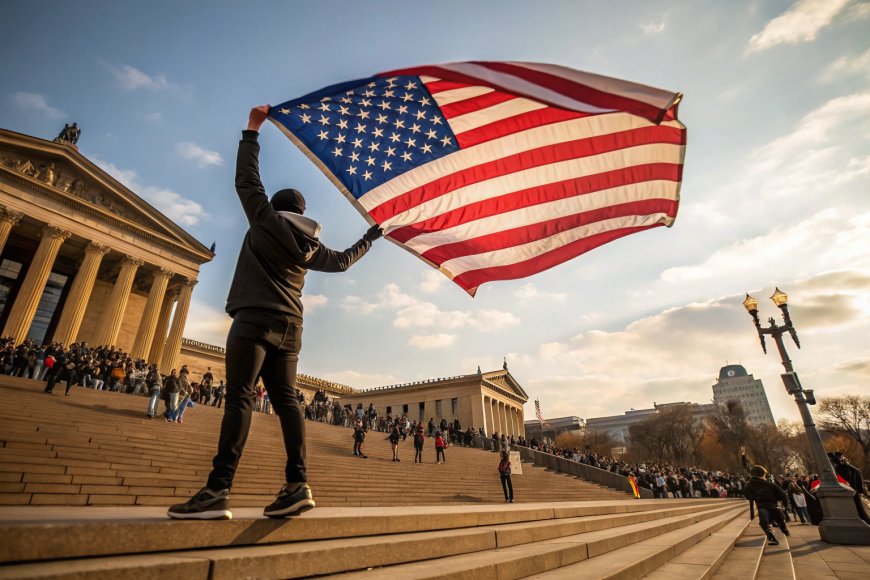The People's Revolt: Inside the Historic "No Kings" Protests That Shook America
Inside the historic 2025 "No Kings" protests where millions defied Trump's military parade amid ICE raids, tariffs, and political violence. Explore the clash of visions for America.
Beneath the roar of fighter jets streaking over Washington D.C. on June 14, 2025, a different kind of American thunder rumbled through city streets nationwide. As President Trump celebrated the Army's 250th anniversary with a $45 million military parade on his 79th birthday, hundreds of thousands of citizens delivered a stark message: "No thrones. No crowns. No kings". This is the untold story of the largest single-day mobilization since Trump returned to office – a defiant chorus against authoritarianism that echoed from Philadelphia to Portland.
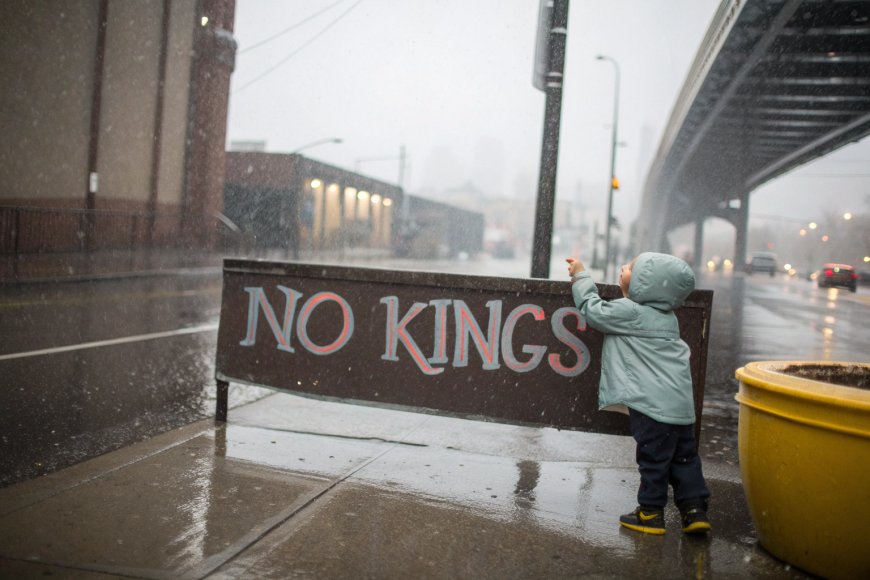
Child touches protest sign in rainy Brooklyn march for democracy
The Powder Keg Ignites
How America Reached Its Breaking Point
The "No Kings" movement didn't erupt overnight. It was the culmination of months of escalating tensions:
- Martial Flashes: Trump's deployment of National Guard troops and Marines to Los Angeles during anti-ICE protests created disturbing images of military force against civilians. Marines guarded federal buildings while tear gas drifted over American streets – scenes more reminiscent of occupied territories than democratic cities.
- Economic Squeeze: Simultaneously, Trump's tariff blitz hammered household budgets. A 10% baseline tariff on all imports, plus rates up to 145% on Chinese goods, became a $1,445 annual tax hike per family. Wharton researchers projected these policies could *reduce long-run GDP by 6%* – economic pain that fueled public fury.
- The Last Straw: The military parade became the ultimate symbol of excess. With 6,600 soldiers, 128 vehicles, and 49 aircraft rolling through D.C. during sweeping budget cuts, organizers seized the contrast: "The flag doesn't belong to President Trump. It belongs to us".
The stage was set for collision.
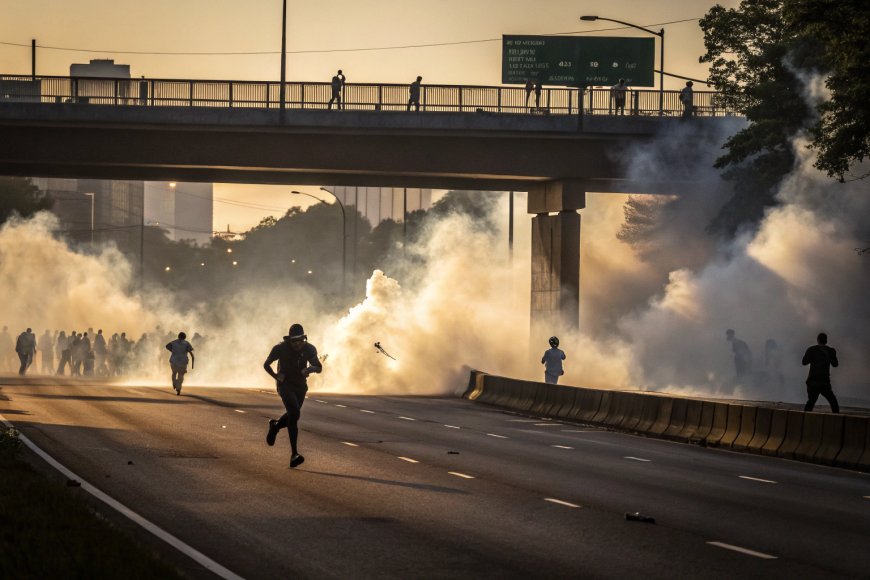
Tear gas deployment at Atlanta anti-ICE demonstration near highway
Blood on the Campaign Trail
A Nation Reeling From Political Violence
The movement faced tragedy hours before the protests began. In Minnesota, a gunman posing as police assassinated Democratic State Representative Melissa Hortman and her husband, critically wounding State Senator John Hoffman and his wife. In the killer's vehicle? "NO KINGS" fliers and a politician hit list.
Governor Tim Walz immediately canceled all Minnesota protests, tweeting: "Given the targeted shootings... we are asking the public to not attend today's demonstrations". Yet even as mourners placed flowers at the state capitol, the national movement pushed forward – with solemnity replacing celebration.
Rep. Jamie Raskin addressed the horror at Philadelphia's flagship rally: "These are our brothers and sisters in the struggle for a more just America, shot down in cold blood... We pray for them and all the people of Minnesota". The shadow of violence would haunt the day's peaceful marches, a grim reminder of democracy's fragility.
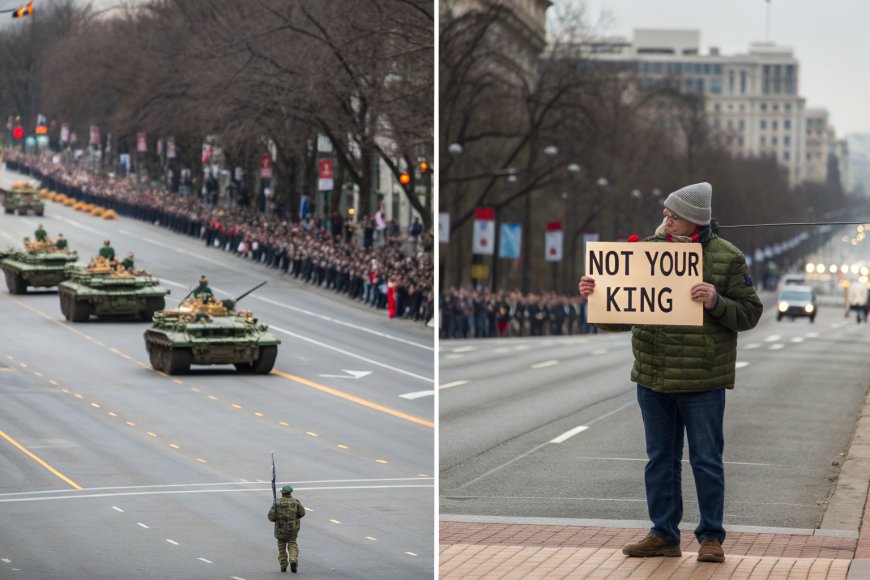
Split image: Trump's military parade vs veteran protester holding 'Not Your King' sign
The Protest Map: Coast-to-Coast Defiance
Where America Stood Up
Organized by the 50501 Movement (50 states, 50 protests, 1 movement), demonstrations ignited in nearly 2,000 locations – deliberately avoiding D.C. to contrast "people-powered movement" with Trump's "costly, wasteful birthday parade"
Notable Absence: St. Paul, Minnesota. Where a planned 25,000-person rally became a ghost town after the shootings, with only mourners circling the capitol.
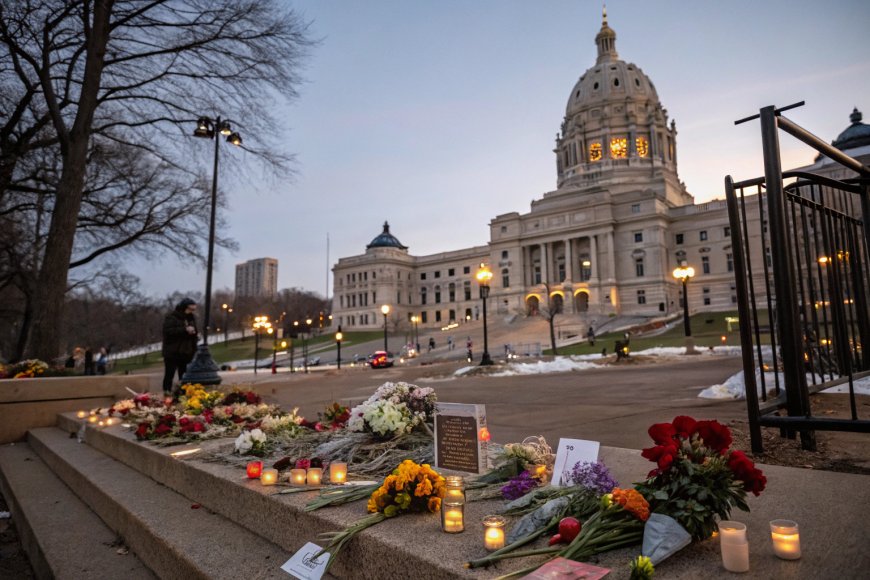
Flowers and candles at empty Minnesota capitol protest site after shootings
Inside the Uprising: Voices From the Streets
Why They Marched
"We're taking our flag back" declared Stacie Phillips in Philadelphia, holding a large American flag with her husband. "Republicans have tried to weaponize it against people. We're fighting for the country we love". This reclaiming of patriotism emerged as a central theme, with countless protesters waving stars and stripes – a deliberate counter to Trump's nationalist imagery.
For 27-year-old Army veteran Marcos Leao, recently detained by Marines in LA, the protest was deeply personal: "When I served, I swore to defend the Constitution – not a president acting like a king". His sign read: "Veterans Against Authoritarianism."
Meanwhile, Shahera Hyatt's Sacramento poster connected global struggles: "From Palestine to Mexico, border walls have got to go." She told NPR: "Trump has led America into clear fascism. I want an America that uplifts people, not just corporations".
The State Strikes Back
Crackdowns and Countermeasures
Republican governors in Virginia, Texas, Nebraska and Missouri mobilized National Guard troops preemptively. Virginia's Glenn Youngkin warned: "Zero tolerance for violence... If you violate the law, you're going to be arrested".
In New York, Mayor Eric Adams deployed 34,000 officers, vowing: "Attacking officers won't be tolerated. You'll meet the greatest police department in the world". The NYPD's show of force contrasted sharply with Brooklyn's family-friendly march, where "dogs in raincoats and little girls in tutus" protested peacefully.
Atlanta saw the day's ugliest clash. As an anti-ICE march veered toward a highway, police fired three tear gas canisters – the acrid plume symbolizing the nation's raw divisions.
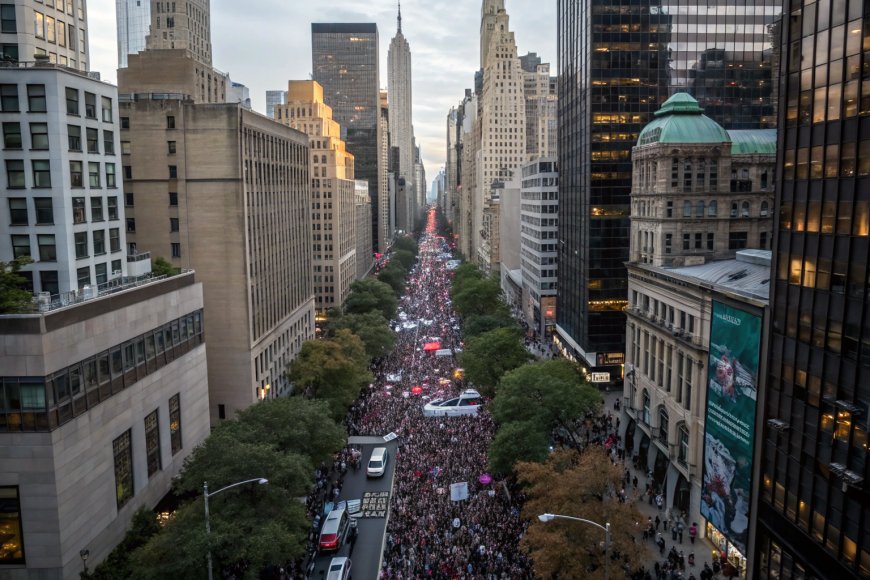
Aerial view of massive No Kings protest flooding 5th Avenue New York City
The Iron Fist Economy
How Tariffs Fueled the Fire
While crowds surged through streets, Trump's trade wars quietly escalated suffering:
- Kitchen Table Pain: Tariffs became a stealth tax – $1,445 per household in 2026. May's inflation bump to 2.4% traced directly to import taxes, with 54% of firms planning price hikes.
- Global Fallout: Retaliatory tariffs targeted $330 billion in U.S. exports. The Wharton model projected tariffs could slash GDP by 6% long-term – making them twice as damaging as a corporate tax hike.
- Courts Push Back: In a stunning May ruling, the U.S. Court of International Trade declared Trump's IEEPA tariffs illegal. Though paused pending appeal, the decision offered protesters hope that checks/balances still functioned.
As economist Scott Galloway warned: Tariffs became the "definition of stupid" – punishing consumers while failing to resurrect manufacturing. The very policies meant to project strength were weakening America's economic foundation.
Three Lines That Defined a Movement
The Core Ideas Powering "No Kings"
"In America, we don't do kings. They've defied courts, deported Americans, and attacked civil rights. No thrones. No crowns. No kings."
– The 50501 Movement Manifesto
"We counteract Trump's parade with resistance. This shows we're not afraid."
– Stacie Phillips, Philadelphia Protester
"The idea that protesters quickly become 'rebels against the government' is untenable and dangerous."
– Federal Judge Charles Breyer
The Aftermath: What Comes Next?
A Nation Forever Changed
By nightfall, two competing visions of America had unfolded:
- In D.C., tanks rumbled past reviewing stands where Trump saluted, jets screaming overhead.
- In Philadelphia, protesters lit candles for Minnesota's slain lawmakers, their silence louder than any fighter jet.
The movement's legacy is still unfolding, but early impacts are clear:
- Political Reckoning: The Minnesota shootings intensified scrutiny on inflammatory rhetoric. Even pro-Trump governors condemned the violence.
- 2025 Battle Lines: With ICE raids, tariffs, and military deployments as backdrop, the 2026 midterms became a referendum on authoritarianism.
- Blueprint for Resistance: The 50501 Movement proved decentralized, multi-issue mobilization could draw millions. Their next act? Voter registration booths at every future rally.
Final Flash Fact: At the parade's end, fireworks exploded over the National Mall. Few noticed the rain beginning to fall – nature's tears for a nation trembling on the knife's edge.
What's Your Reaction?











































